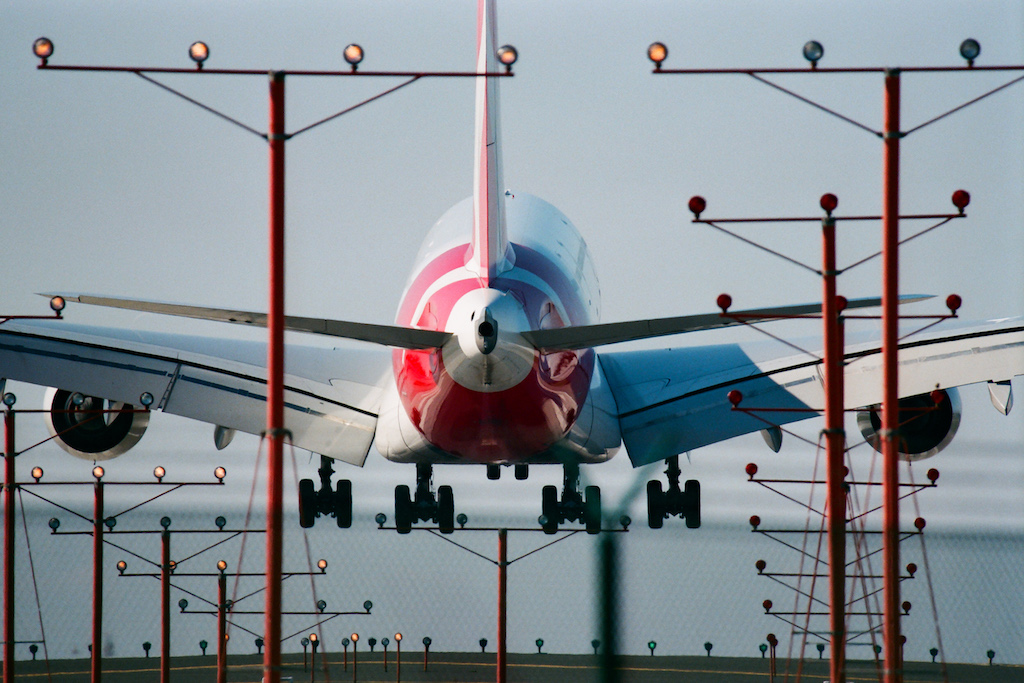Qantas Expansion Shows Power of Vaccinations in Travel Recovery

Photo Credit: A Qantas A380 lands at LAX. Flickr / Glenn Beltz
After standing down almost all of its entire international network for more than a year, Qantas Airways is coming back with a vengeance. The carrier is adding Delhi to its map, accelerating the return of its Airbus A380s and will resume flights to seven long-haul destinations weeks — and in some cases more than a month — earlier than planned on the back of the success of Australia's Covid-19 vaccination program.
"Australia is en route to be one of the most vaccinated countries in the world," Australian Prime Minister Scott Morrison on Friday. "And that means planes get back in the sky."
Morrison spoke at a joint event with Qantas during which the airline rolled out its latest schedule expansion. The Oneworld alliance carrier will connect Sydney to Delhi — its first scheduled Indian destination since ending Mumbai flights in 2012 — thrice weekly with an Airbus A330 from December 6 through March, with an eye on extending that further depending on demand. Flights to Bangkok, Fiji, Johannesburg, Phuket, and Singapore will all resume weeks early. And, in response to strong demand for its Sydney-Los Angeles flights that resume November 1, Qantas will return its A380s to the route three months early in April, and the airline is in talks with Boeing about taking delivery of three stored 787-9s from April as well.
"Demand has been massive," said Qantas CEO Alan Joyce, who spoke at the event with Morrison, of the airline's London and Los Angeles flights that both resume at the beginning of November. "In a few hours, a large number of those flights sold out.”
Joyce added that Qantas has seen a "phenomenal reaction" from travelers to the federal and state border reopenings in Australia.
Australia and its states have tied their reopenings to Covid-19 vaccination rates. The federal government expects to meet its 80 percent threshold for the national border by the time Qantas resumes London and Los Angeles flights on November 1. As of Thursday, almost 72 percent of Australians over the age of 16 were fully inoculated, and 86 percent had received at least one jab, data from the Australian Department of Health show. And, critical to Qantas' Sydney hub, 83 percent of New South Wales residents over 16 years old were vaccinated as of October 19. Victoria will also open its borders on November 1, with other states expected to follow soon after.
The successful vaccination program, tied with clear guidelines from the Australian government, is making the country a model for reopening. Although quarantine-free travel is initially limited to citizens, permanent residents and immediately family who are fully inoculated against Covid-19, demand is robust, and Joyce said he expects the reopening to expand to foreign visitors soon. Speaking on October 20, United Airlines CEO Scott Kirby spoke positively of the country's reopening and said it would likely lead the travel recovery in the Asia-Pacific region. United was the second-largest carrier between Australia and the U.S. behind Qantas in 2019, Cirium schedules show.
IATA Director General Willie Walsh has repeatedly backed risk-based measures, including both vaccination status and testing, for reopening. Speaking in Boston earlier in October, he said Australia's reopening — and the demand seen by airlines — is an example of the success of measures in restarting travel.
Following the restart of London and Los Angeles flights, Qantas will resume service to Singapore on November 23, Fiji on December 7, Johannesburg on January 5, Phuket on January 12, and Bangkok on January 14. Talks are on-going with Indonesian authorities over the resumption of flights to Bali, which is one of the most popular international destination for Australians. The latest dates follow previous announcements that Honolulu, New Zealand, Tokyo, and Vancouver flights would resume in mid-December.
In addition to Australia's high vaccination rates, Qantas benefits from competitor Virgin Australia's pullback from international flying. Virgin removed all of its widebody aircraft and indefinitely postponed the resumption of its long-haul network as part of its emergence from voluntary administration last year. The airline has unveiled no changes to that plan except to accelerate the growth of its Boeing 737 fleet to capture more domestic and near-international Australian travelers.
Qantas expects its first A380 to return to Australia from storage on December 25. Two aircraft will return to revenue service in April with five set to be flying by November 2022. The airline plans to have all 10 of its A380s back in service by early 2024.
The 787s that Qantas hopes to take delivery of early were previously scheduled for delivery during the airlines 2023 fiscal year that runs from July 2022 through June 2023. The jets represent the airline's entire outstanding backlog of 787s.
Joyce did not comment on the status of Qantas' narrowbody fleet replacement program. By the end of the year, the carrier will select some combination of more than 100 Airbus A220s, Airbus A320neos, Boeing 737 Maxes, and Embraer E-Jet-E2s to replace its 95 Boeing 717-200s and 737-800s over the next decade.
